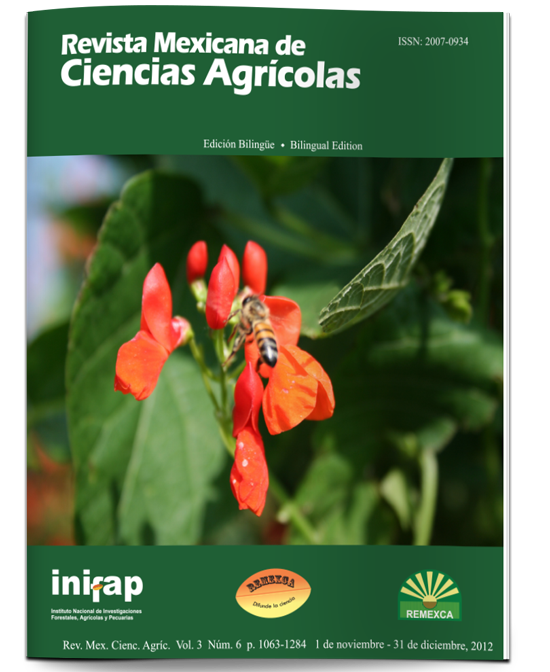Biofilm production and resistance to disinfectants in Salmonella strains isolated from prickly pear, water and soil
DOI:
https://doi.org/10.29312/remexca.v3i6.1359Keywords:
Salmonella, biofilms, disinfectant, prickly pearAbstract
A characteristic from Salmonella is its capacity to form biofilms. These structures can become sources of contamination in the production of safe food, as they resist treatment with antibiotics and are difficult to remove in normal cleaning procedures. Therefore the objectives of this study were: 1) determine the capacity of Salmonella strains isolated from prickly pear (10 strains), water samples (2 strains) and soil (3 strains) to form biofilms and 2) evaluate the bactericidal effect of disinfectants citric acid, lactic acid and sodium hypochlorite on biofilm- forming strains. We used the method of O'Toole and Kolter (1998) and polystyrene plates (Coster®) with minimal essential medium with glucose (MEM) and determined the optical density (OD) to estimate the production of biofilms. The disinfectants were applied to plates with biofilm formation in simple MEM 48 h at 37 °C.All strains showedbiofilmproductionafter24halthoughtherewere significant differences (Tukey α= 0.05), depending on the incubation time with respect to the values of OD. The soil strains expressed it’s the capacity faster than water and prickly pear. Sodium hypochlorite (200 ppm) and lactic acid (1.5 x 10-4) inhibited cell growth when applied for 20 min on biofilms. The results obtained demonstrate the importance of implementing good agricultural practices in the production of prickly pear as a strategy to prevent contamination by Salmonella strains biofilms forming in vivo, where the effect of treatment with sanitizers may vary.
Downloads
Downloads
Published
How to Cite
Issue
Section
License
The authors who publish in Revista Mexicana de Ciencias Agrícolas accept the following conditions:
In accordance with copyright laws, Revista Mexicana de Ciencias Agrícolas recognizes and respects the authors’ moral right and ownership of property rights which will be transferred to the journal for dissemination in open access. Invariably, all the authors have to sign a letter of transfer of property rights and of originality of the article to Instituto Nacional de Investigaciones Forestales, Agrícolas y Pecuarias (INIFAP) [National Institute of Forestry, Agricultural and Livestock Research]. The author(s) must pay a fee for the reception of articles before proceeding to editorial review.
All the texts published by Revista Mexicana de Ciencias Agrícolas —with no exception— are distributed under a Creative Commons License Attribution-NonCommercial 4.0 International (CC BY-NC 4.0), which allows third parties to use the publication as long as the work’s authorship and its first publication in this journal are mentioned.
The author(s) can enter into independent and additional contractual agreements for the nonexclusive distribution of the version of the article published in Revista Mexicana de Ciencias Agrícolas (for example include it into an institutional repository or publish it in a book) as long as it is clearly and explicitly indicated that the work was published for the first time in Revista Mexicana de Ciencias Agrícolas.
For all the above, the authors shall send the Letter-transfer of Property Rights for the first publication duly filled in and signed by the author(s). This form must be sent as a PDF file to: revista_atm@yahoo.com.mx; cienciasagricola@inifap.gob.mx; remexca2017@gmail.
This work is licensed under a Creative Commons Attribution-Noncommercial 4.0 International license.



